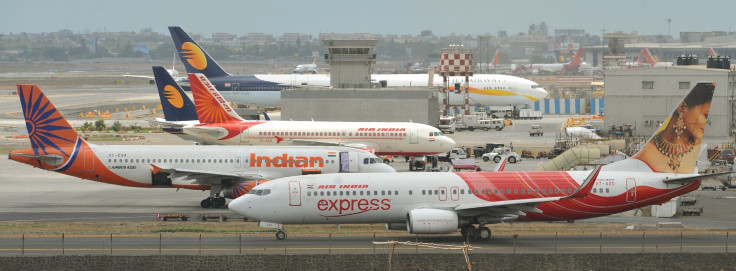India Wants To Open Up Airline, Insurance Sectors To Foreign Investment

KEY POINTS
- India wants to raise the foreign ownership limit on insurance firms to 74% from 49%
- The two largest sources of FDI are Singapore and Mauritius
- India has been seeking a buyer for its troubled national airline Air India
The Indian government may open up its insurance and aviation industries to foreign investors in an attempt to revitalize a slowing economy.
The Finance Ministry has proposed raising the limit on foreign direct investment in Indian insurance and pension companies to 74% from the current 49% level.
The government also wants to allow foreign airlines to own Indian carriers. Easing FDI restrictions in the aviation sector could potentially help attract buyers for beleaguered national carrier Air India, which the government has been trying to sell off.
The government is also seeking a buyer for Jet Airways, a Mumbai-based international carrier that has been grounded since April 2019 after filing for bankruptcy.
Specifically, government rules currently prohibit any foreign investor from taking control of an Indian airline that has a board where two-thirds of the members are Indians.
In addition, the ministry wants to permit more FDI in its railways, education, and rental housing management companies. (FDI is presently prohibited in Indian railways).
The government also seeks to sell of its second-largest state refiner, Bharat Petroleum Corp., as well as Shipping Corp. of India Ltd., the country’s largest shipping company.
Last year, the Indian government relaxed foreign investment rules in retail, manufacturing and coal mining sectors in order to attract foreign investments.
FDI currently amounts to less than 2% of Indian gross domestic product – the government would like to see that figure rise to 6%.
FDI inflows into India climbed by 15% to $26 billion for the six months ended September 2019 – the first half of the current fiscal year.
The single largest source of FDI was Singapore with $8 billion in investments into India. Singapore was followed by Mauritius ($6.36 billion), the U.S. ($2.15 billion), the Netherlands ($2.32 billion) and Japan ($1.78 billion).
Industries that attracted the largest foreign inflows comprised services ($4.45 billion), computer software and hardware ($4 billion), telecommunications ($4.28 billion), and automobiles ($2.13 billion).
Guruprasad Mohapatra, the secretary of the government’s Department for Promotion of Industry and Internal Trade said FDI inflows have not been hurt by a slowdown in the global economy.
"FDI growth has been very good this year and I am quite hopeful that with these policies and initiatives, India's FDI story will continue unabated and continue to grow at a healthy rate," Mohapatra said.
He noted that in the World Bank's doing business report, India's ranking jumped to 63rd among 190 countries, up from 77th place in the prior year.
"Ease of doing business is very critical for FDI. Foreign companies look [at] the World Bank's ranking and they have been very impressed with India's much improved ranking so far. Our target is to go into the [top 50 countries in the ranking]," he said. "Some of the [Indian] states are also wooing investments. So we need to further work on the areas in which the investments are coming and see how quickly and seamlessly we can give them approvals. We know which companies are keen to invest in India and we are looking at them to see what help we can provide.”
All these measures would likely be designed to help achieve Prime Minister Narendra Modi’s stated goal of doubling the size of the country’s economy to $5 trillion by 2025.
Modi said he wants India to make “bold” investment decisions in order to make his economic goals a reality. He also plans to make huge investments in infrastructure and the rural economy.
Specifically, he said 100 trillion rupees ($1.4 trillion) will be invested in the infrastructure sector in the coming years and another 25 trillion rupees ($350 billion) will be poured into the rural economy.
Modi is not overly concerned that Indian GDP growth fell for six straight quarters to a 6-year low of 4.5% in the July-September 2019 quarter.
“The country’s economy has faced ups and [downs] earlier as well but now the economy has the resilience to reverse the current slowdown and return to a high-growth trajectory,” he said.
© Copyright IBTimes 2025. All rights reserved.





















